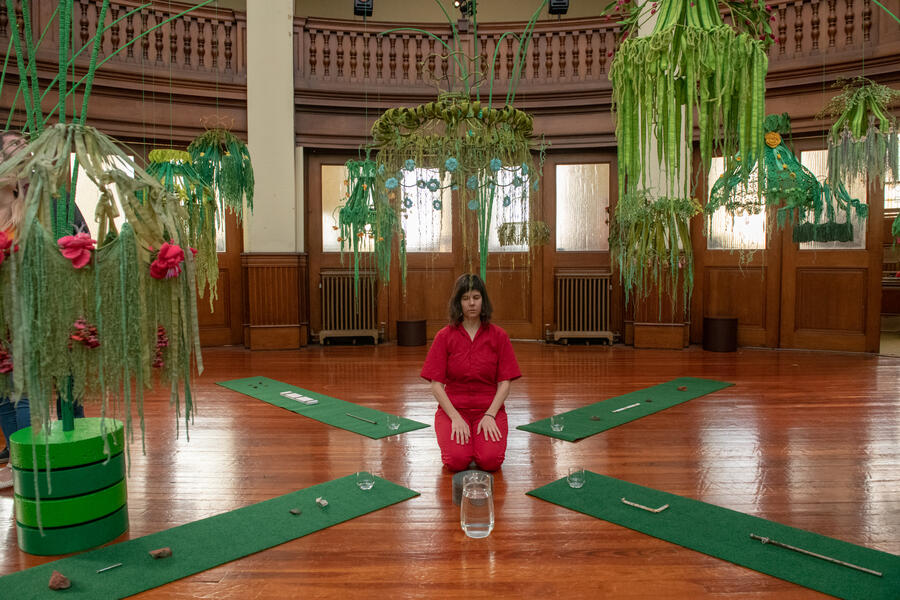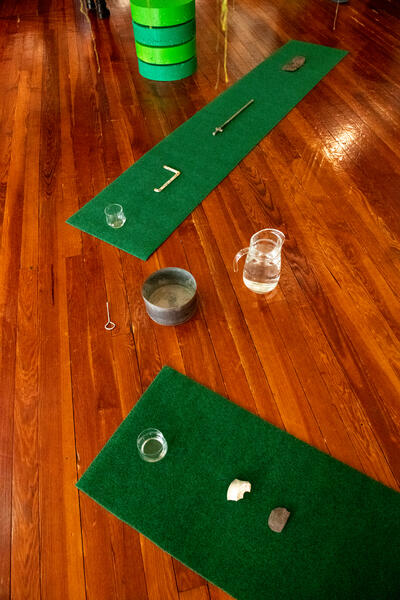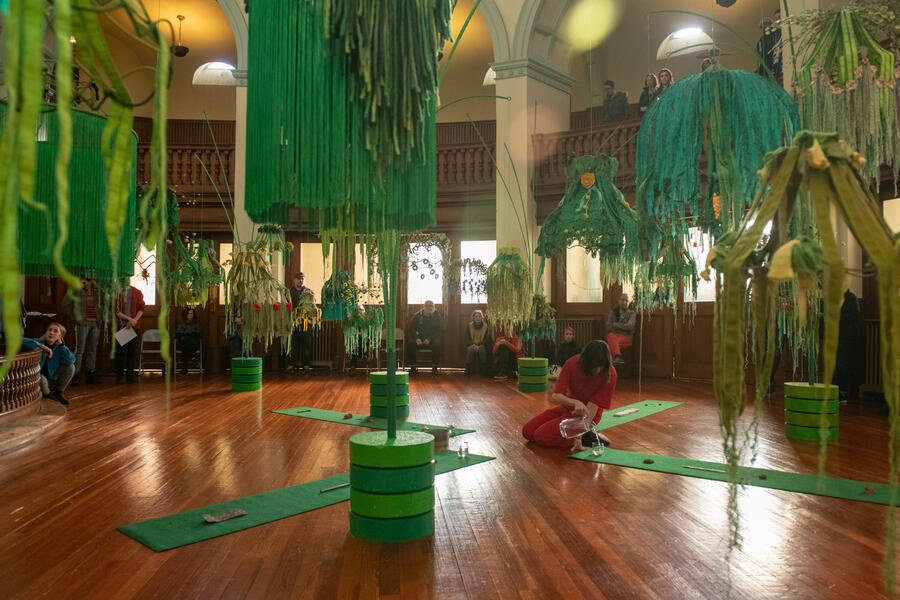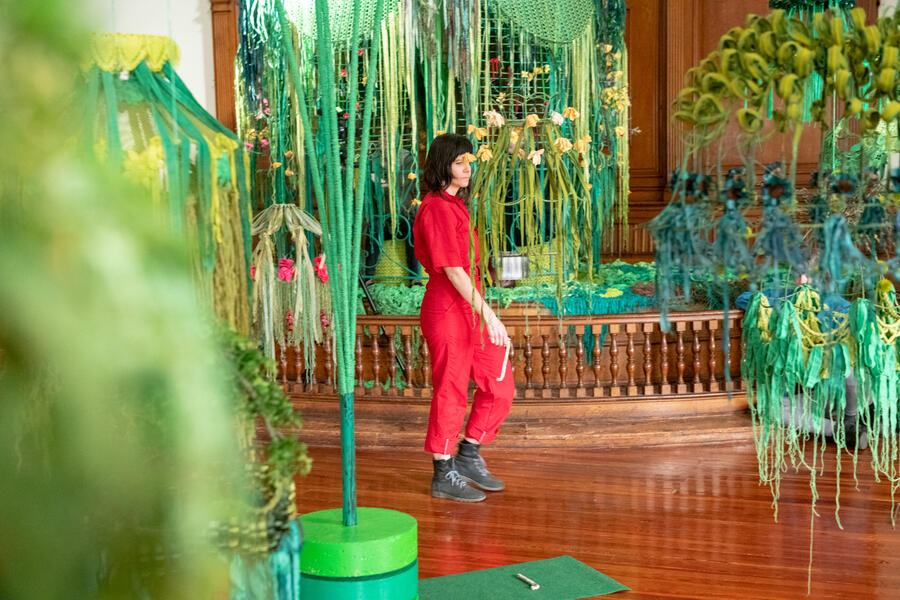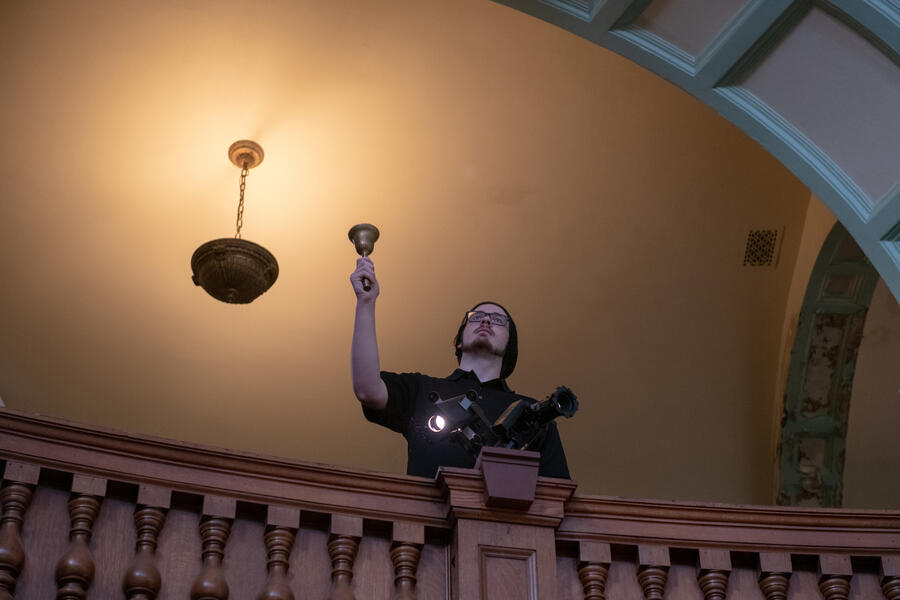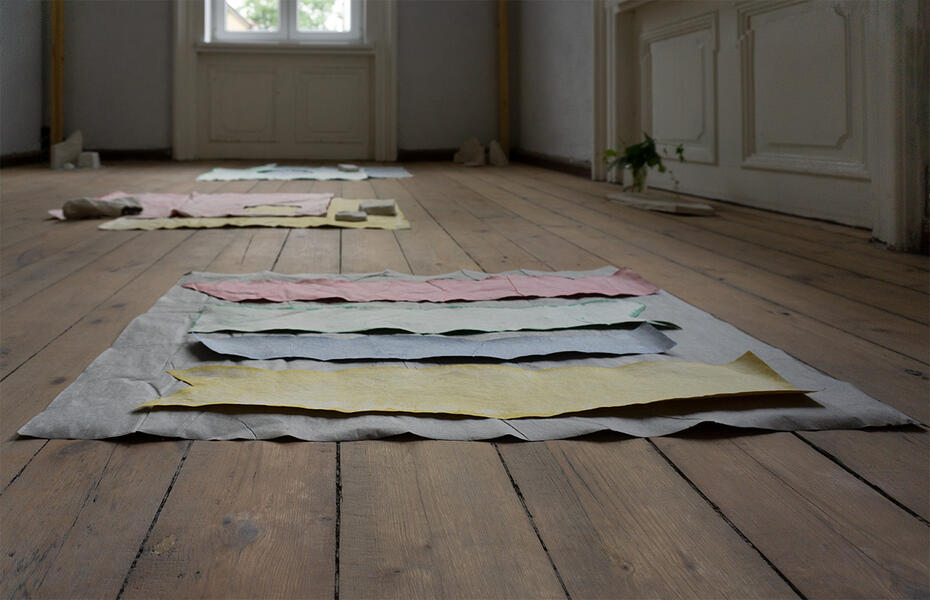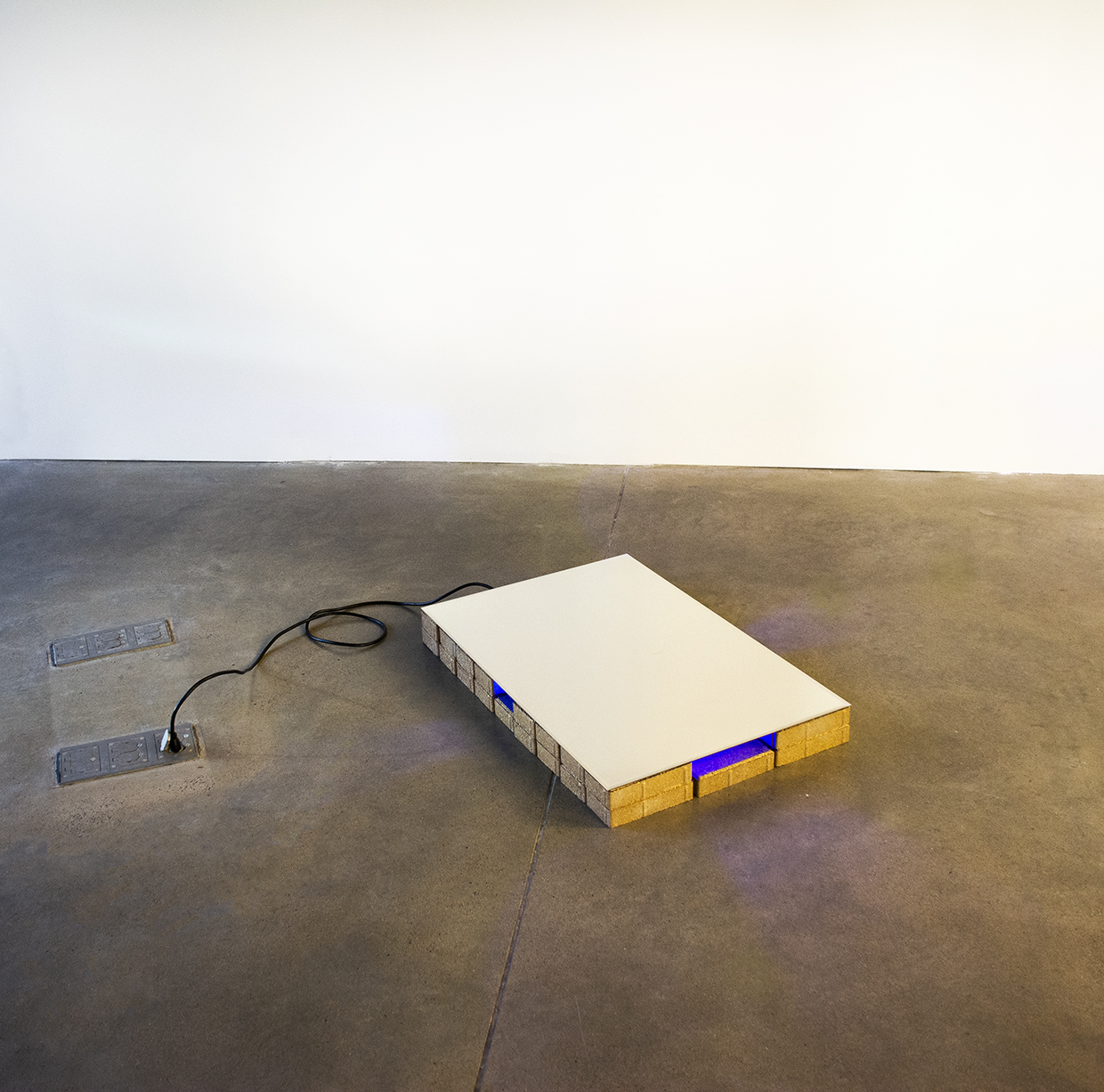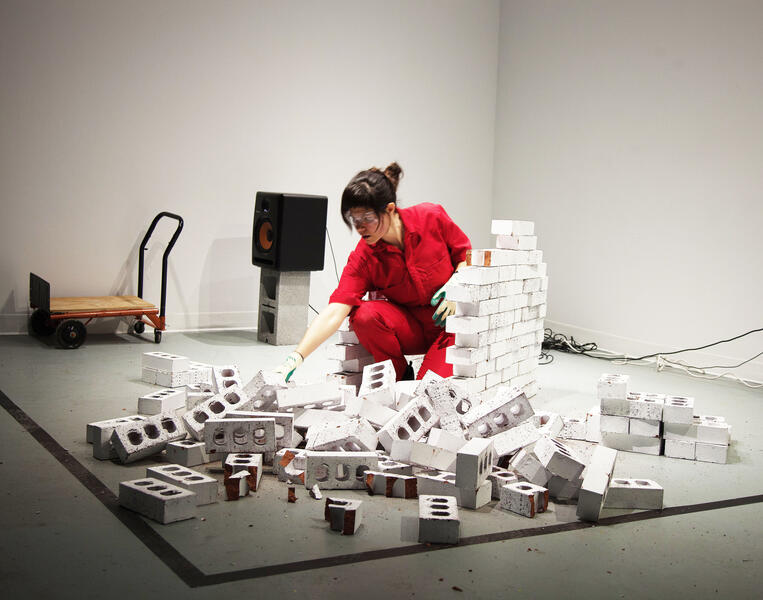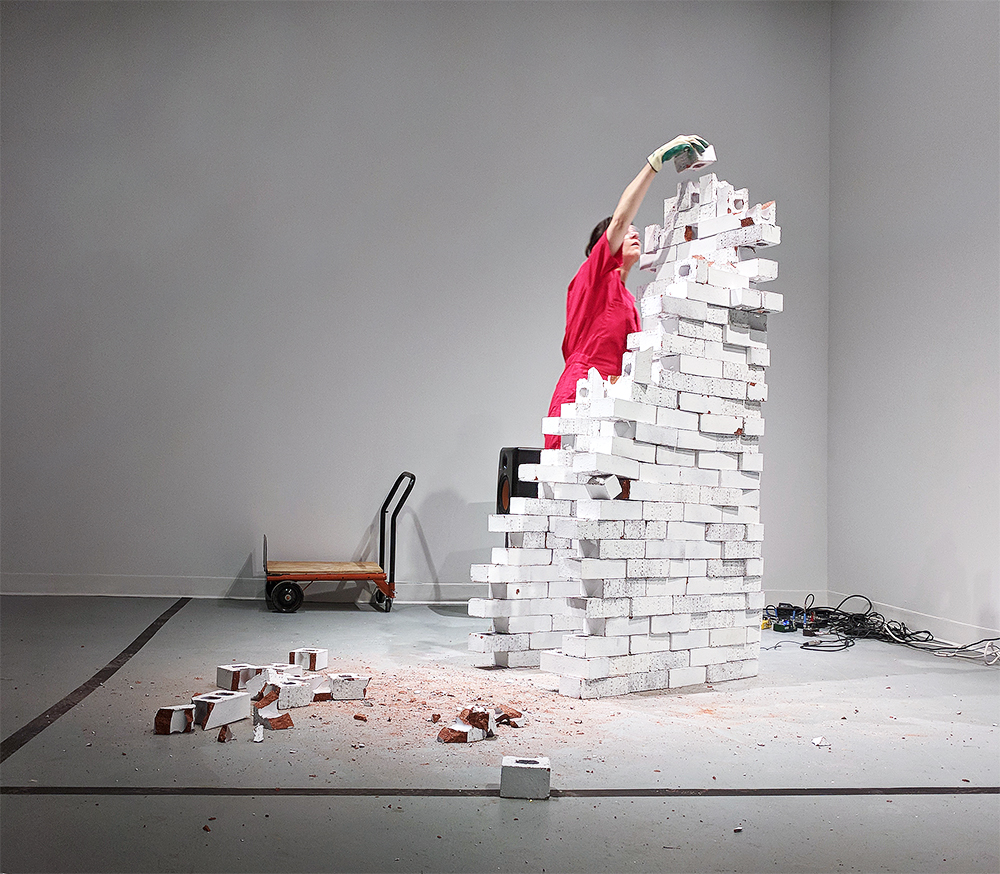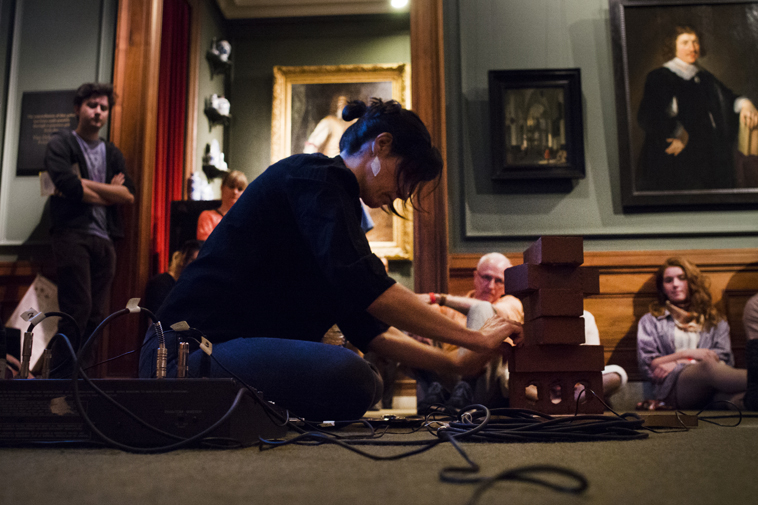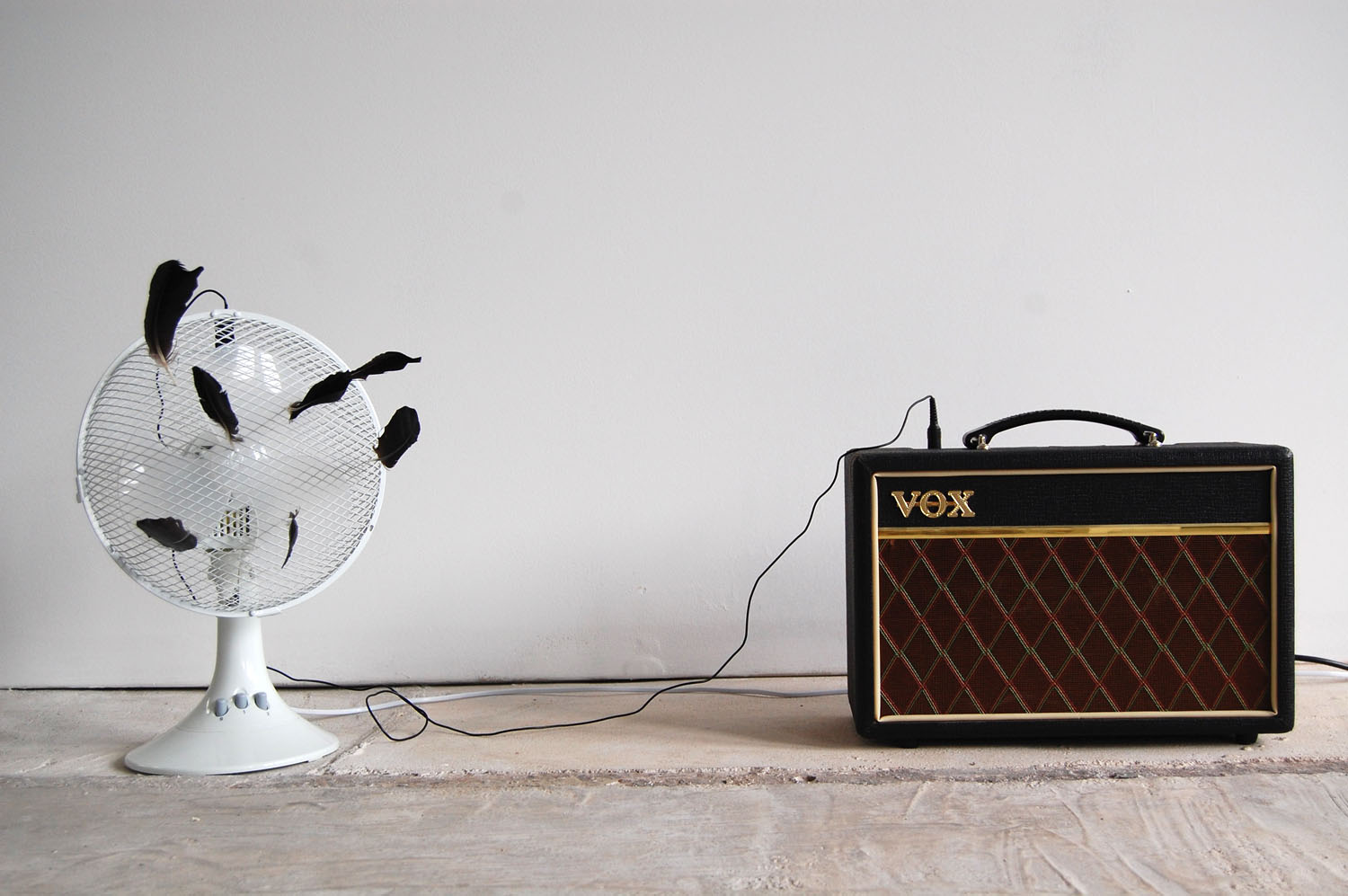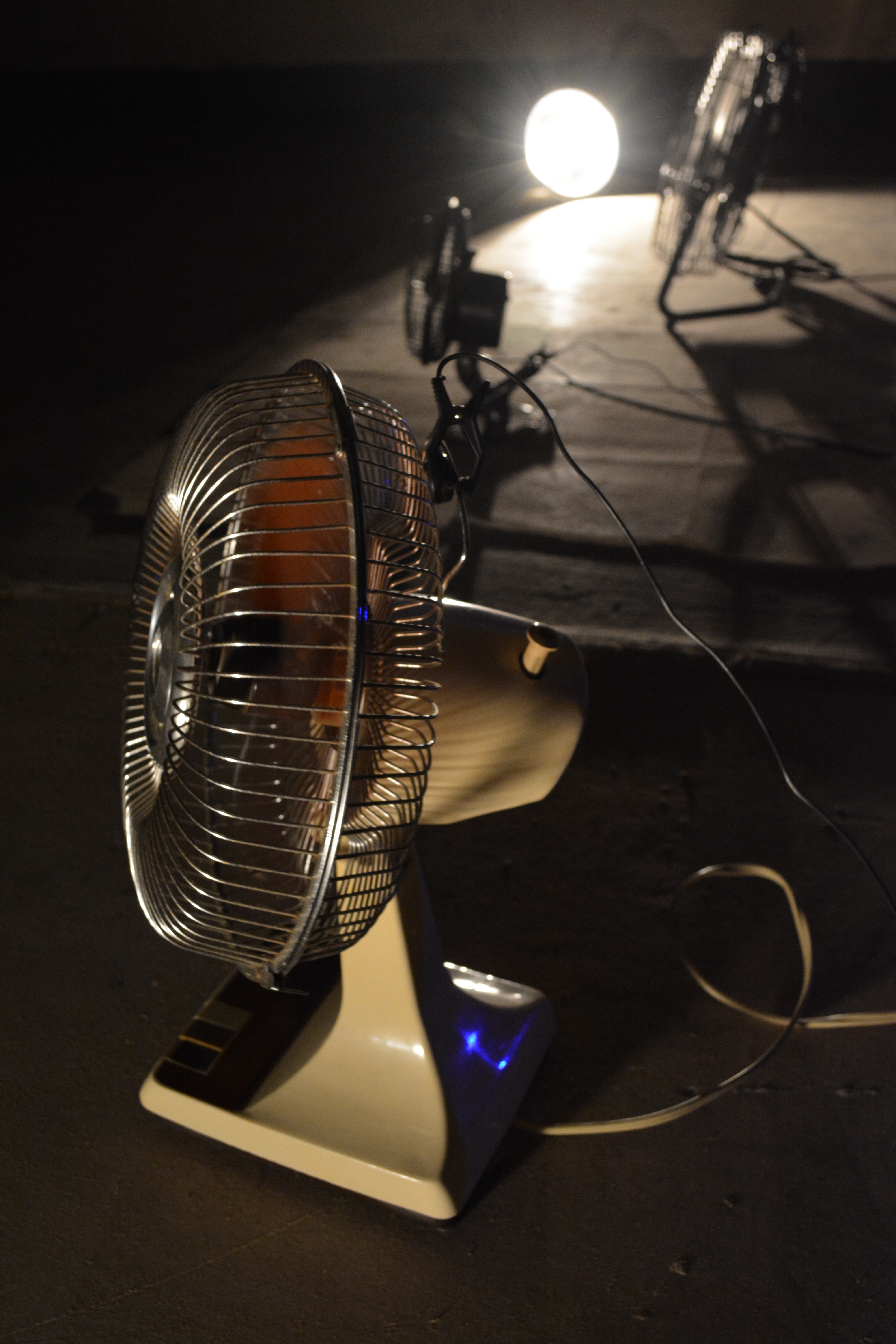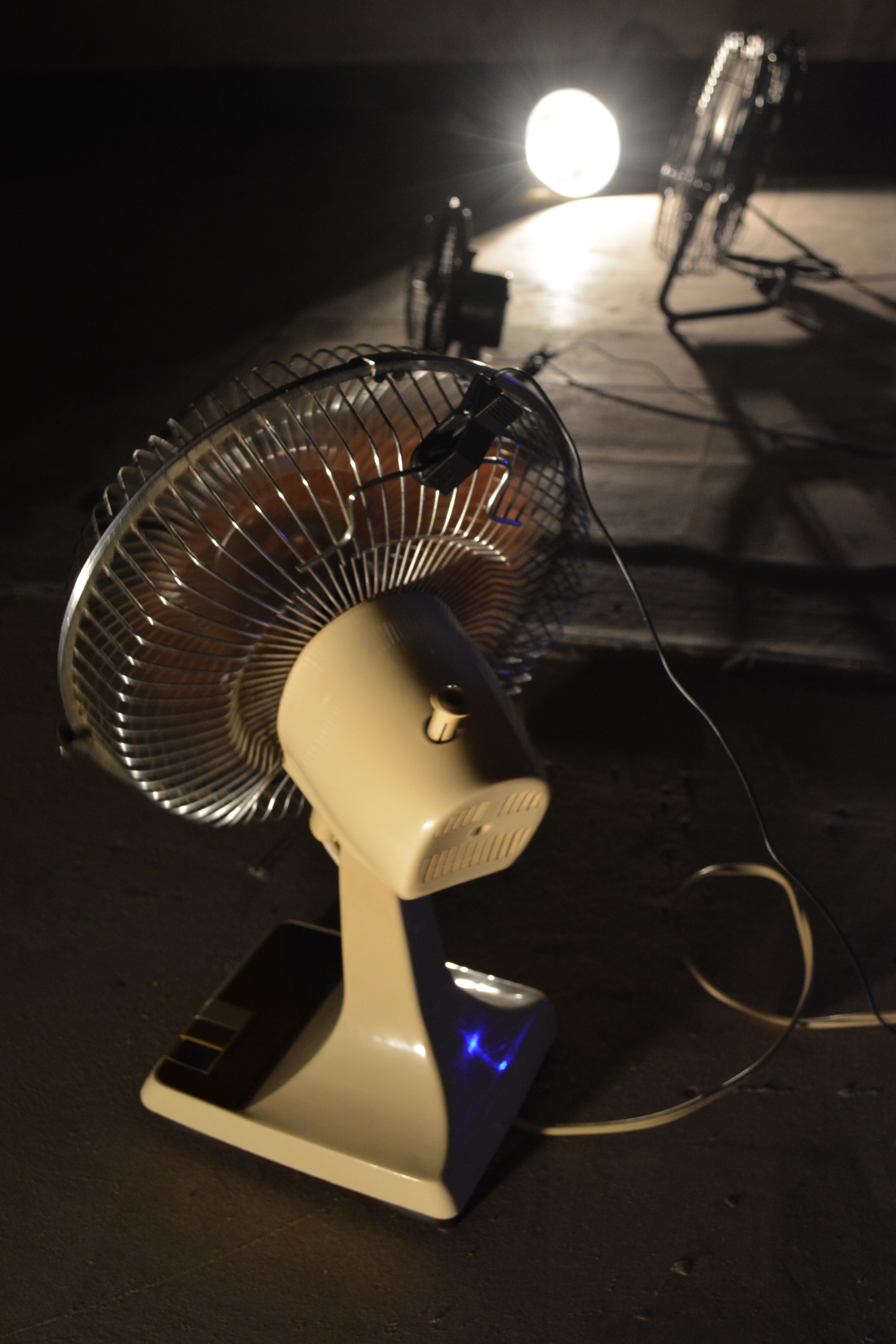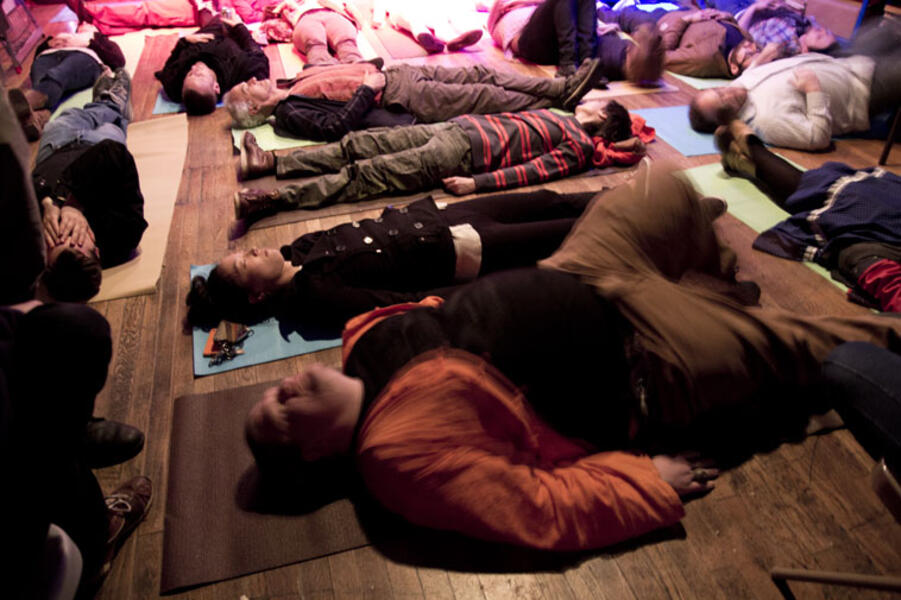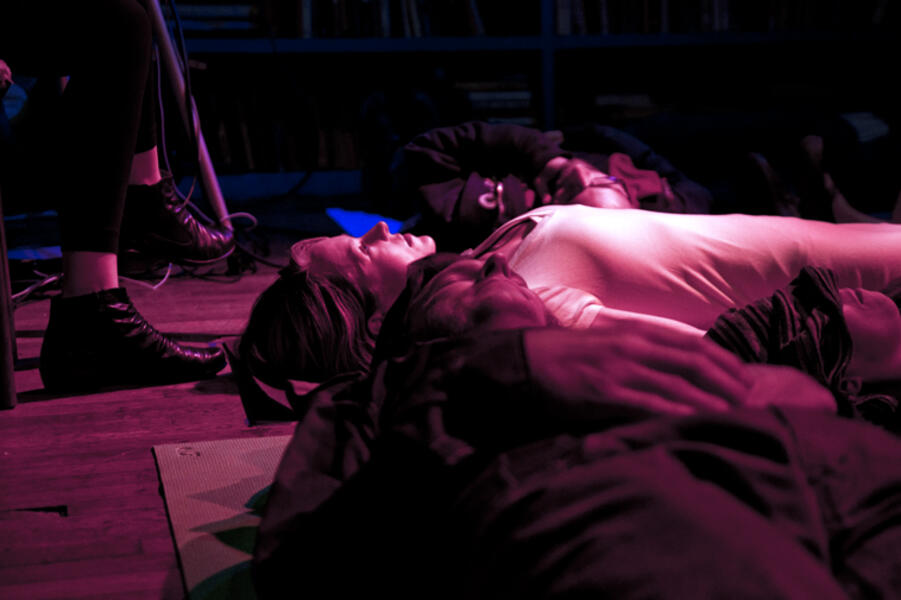About Carrie

Carrie Fucile is an interdisciplinary artist and experimental musician whose work is performative and frequently collaborative. First and foremost a sound artist, she often incorporates movement and physical materials into her process. Her creative efforts interpret the effects of political power, technological shifts, and global economics on the human condition. Ultimately each piece explores traces of these events found in objects, architecture, and landscapes.
Reconciliation
performance
15:00
2018
Reconciliation is a performance of longing, grief, reckoning, and hope in the age of the Anthropocene. This ritual looks to the past and prays for the future. It grapples with both personal and collective history while gently attempting to exorcise. It was created in response to Melissa Webb's installation Proficiencies for Living in Ruins and performed on site, at Lovely Lane Church in Baltimore, Maryland.
Semblance
With this work, I am exploring issues of fake versus real in the age of the selfie and cryptocurrency.
-
 Semblancemirror, bricks, exciter, amplifier, ipod, LED light; 4" x 24" x 26"; 2018
Semblancemirror, bricks, exciter, amplifier, ipod, LED light; 4" x 24" x 26"; 2018 -
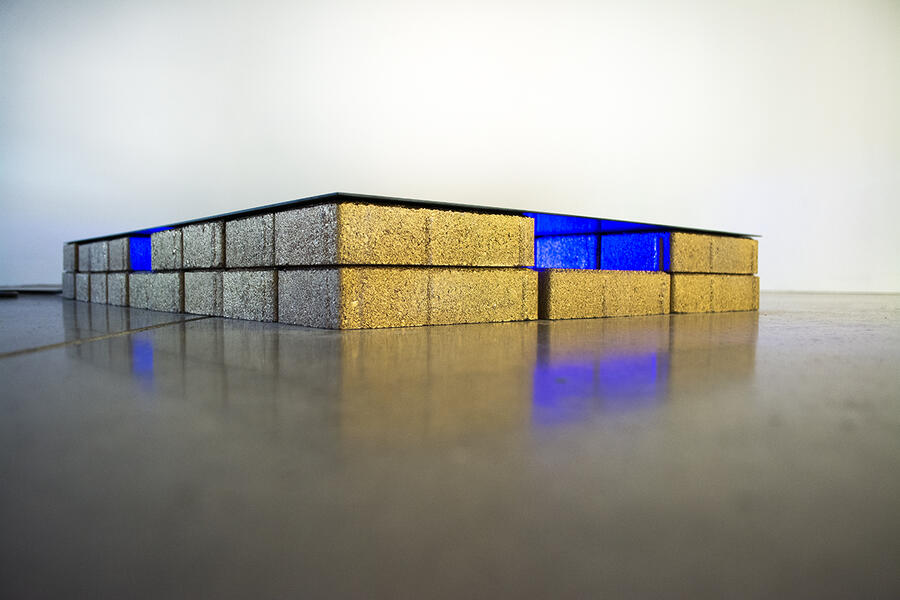 Semblancemirror, bricks, exciter, amplifier, ipod, LED light; 4" x 24" x 26"; 2018
Semblancemirror, bricks, exciter, amplifier, ipod, LED light; 4" x 24" x 26"; 2018 -
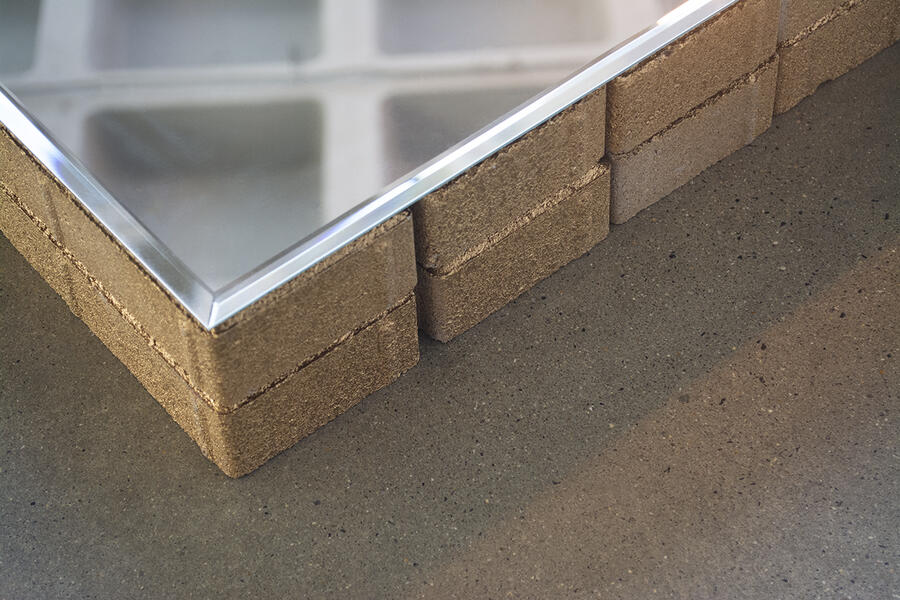 Semblancemirror, bricks, exciter, amplifier, ipod, LED light; 4" x 24" x 26"; 2018
Semblancemirror, bricks, exciter, amplifier, ipod, LED light; 4" x 24" x 26"; 2018 -
Semblancemirror, bricks, exciter, amplifier, ipod, LED light; 4" x 24" x 26"; 2018
Occupational Enterprises
Occupational Enterprises is a performance where Fucile rearranges 200 white bricks into a series of structures for sixty minutes. Each one is toppled before building another. The sound of the moving, stacked, and collapsed bricks is transmitted by a contact microphone attached to the floor and distorted by a series of effects.
In addition to Fucile's Italian immigrant ancestry, the work was informed by several texts. The first, Hito Steyerl’s essay: “Is a Museum a Factory?,” observes that many places where employees worked on factory lines have recently been transformed into sites of artistic labor. Indeed, many cultural institutions and artist studios are in former industrial spaces. The second, Pietro DiDonato’s novel Christ in Concrete, tells the story of an Italian immigrant bricklayer who is killed on the job due to unsafe conditions and whose eldest son is forced to leave school to support his family.
Material Actions
Material Actions is a performance created with video artist Mark Brown. The piece was originally developed for the Dutch Cabinet at the Walters Art Museum in Baltimore, Maryland and premiered as part of their 2016 ART/SOUND/NOW series. It has subsequently been performed at School 33 Art Center in Baltimore, MD.
In this performance Fucile used a series of contact microphones to "play" common, modern materials such as bricks, coins, and a fan. Brown projects a sound-reactive video behind me. The work work considers the economics of the Dutch Golden Age and the modern museum.
-
 Material Actions at the Walters Art Museumperformance, 30:00, 2016
Material Actions at the Walters Art Museumperformance, 30:00, 2016 -
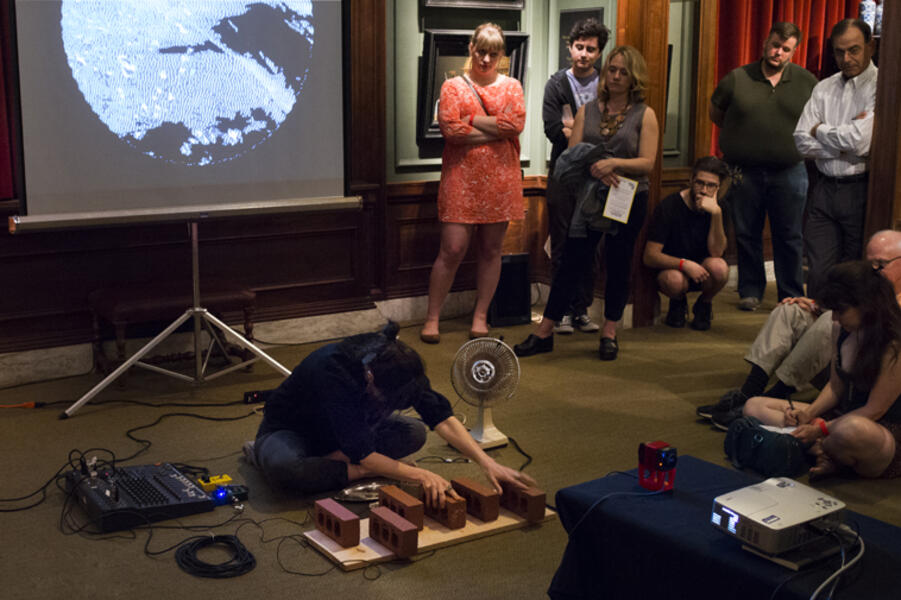 Material Actions at the Walters Art Museumperformance, 30:00, 2016
Material Actions at the Walters Art Museumperformance, 30:00, 2016 -
Material Actions at the Walters Art Museumperformance, 30:00, 2016
-
Material Actions at School 33performance, 20:00, 2016
-
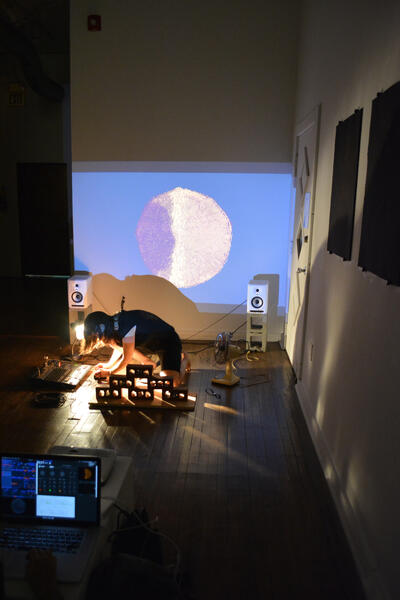 Material Actions at School 33performance, 20:00, 2016
Material Actions at School 33performance, 20:00, 2016 -
Material Actions at School 33performance, 20:00, 2016
Tremor
Tremor employs a feather, a fan, and a contact microphone. When the fan is switched on, it blows and causes the feather to flutter. The feather is pressed against a contact microphone, which registers any vibration. The microphone is plugged into an amplifier in the corner, and emits the sound of the shaking feather. It is reminiscent of the flapping of wings. In this work the viewer sees and hears how a seemingly fragile thing can create a large change in the environment.
-
Tremorfeather, fan, contact microphone, clamp, table, and amplifier; dimensions variable; 2016
-
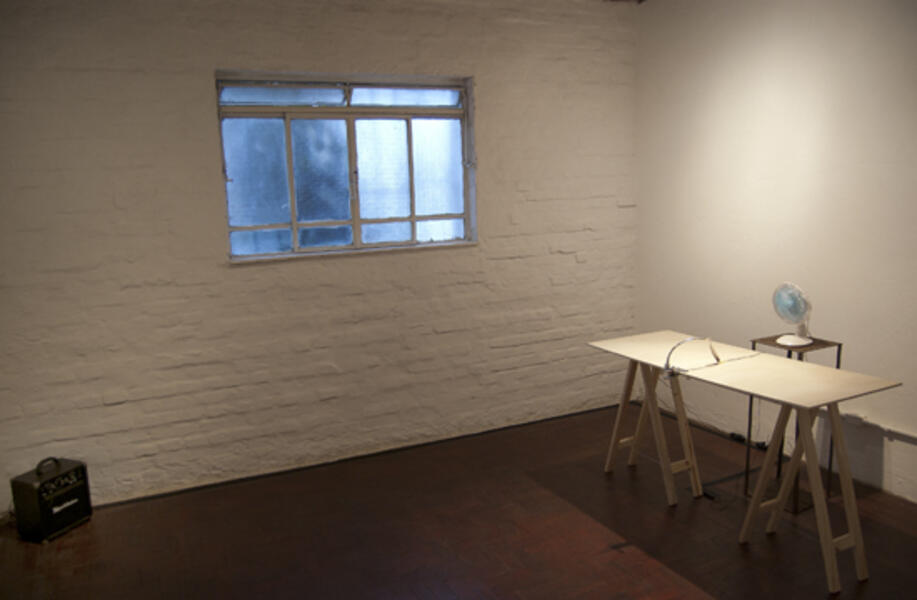 Tremorfeather, fan, contact microphone, clamp, table, and amplifier; dimensions variable; 2016
Tremorfeather, fan, contact microphone, clamp, table, and amplifier; dimensions variable; 2016 -
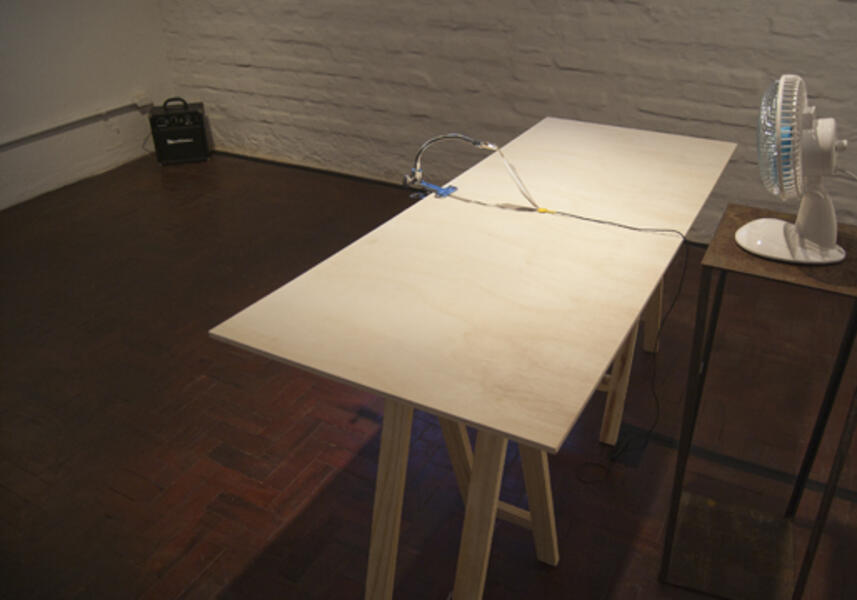 Tremorfeather, fan, contact microphone, clamp, table, and amplifier; dimensions variable; 2016
Tremorfeather, fan, contact microphone, clamp, table, and amplifier; dimensions variable; 2016 -
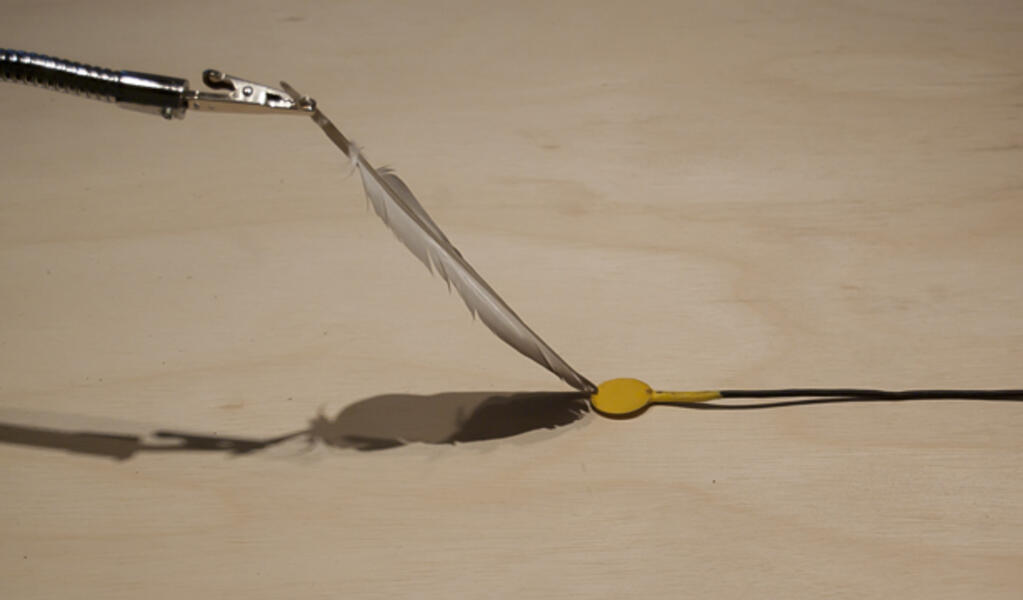 Tremorfeather, fan, contact microphone, clamp, table, and amplifier; dimensions variable; 2016
Tremorfeather, fan, contact microphone, clamp, table, and amplifier; dimensions variable; 2016
Flight 1
Flight 1 compares how both humans and birds will relocate in search of shelter. A guitar pickup is clipped onto a fan and plugged into an amplifier. The pickup contains a disc that is sensitive to pressure, so the sound we hear is the fan’s vibrarion. The air and the sound travel through space, alluding to flight paths. The feathers that protrude from the fan further illustrate this metaphor.
-
 Flight 1feathers, desk fan, guitar pickup, amplifier; approximately 20" x 36" x 12"; 2015
Flight 1feathers, desk fan, guitar pickup, amplifier; approximately 20" x 36" x 12"; 2015 -
Flight 1feathers, desk fan, guitar pickup, amplifier; approximately 20" x 36" x 12"; 2015
-
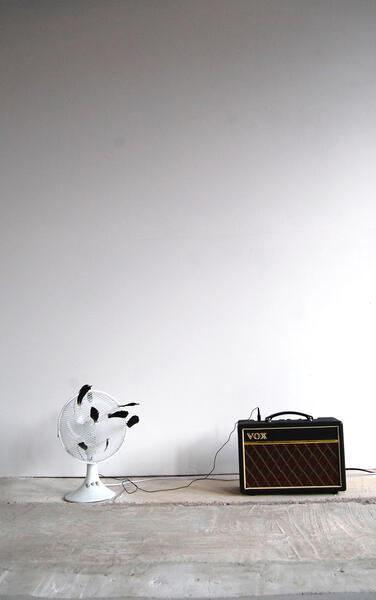 Flight 1feathers, desk fan, guitar pickup, amplifier; approximately 20" x 36" x 12"; 2015
Flight 1feathers, desk fan, guitar pickup, amplifier; approximately 20" x 36" x 12"; 2015 -
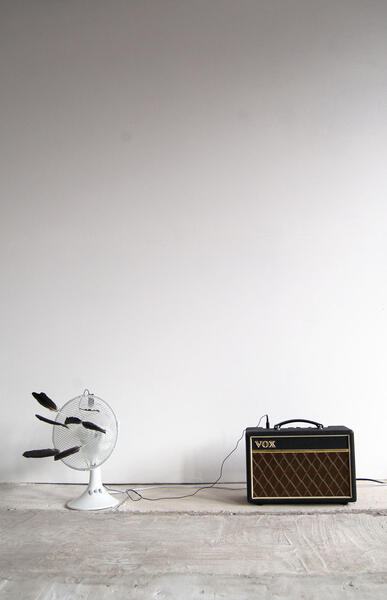 Flight 1feathers, desk fan, guitar pickup, amplifier; approximately 20" x 36" x 12"; 2015
Flight 1feathers, desk fan, guitar pickup, amplifier; approximately 20" x 36" x 12"; 2015 -
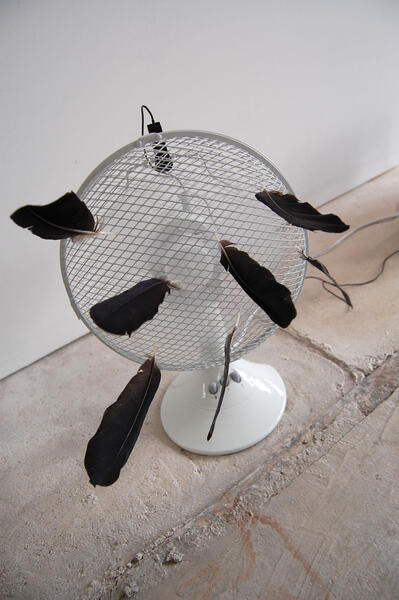 Flight 1feathers, desk fan, guitar pickup, amplifier; approximately 20" x 36" x 12"; 2015
Flight 1feathers, desk fan, guitar pickup, amplifier; approximately 20" x 36" x 12"; 2015 -
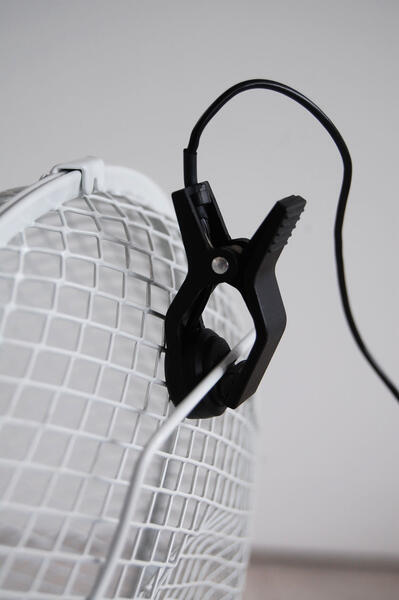 Flight 1feathers, desk fan, guitar pickup, amplifier; approximately 20" x 36" x 12"; 2015
Flight 1feathers, desk fan, guitar pickup, amplifier; approximately 20" x 36" x 12"; 2015
Flight 2
Flight 2 grew out of Flight 1. This installation expands the number of fans, pickups, and amplifiers to increase the volume and texture of the audio. Themes from Flight 1 are referenced, but in this setting, the air and sound have a much more menacing intensity that suggests large methods of transport or war.
Sync
Sync is a performance created with programmer Dan Zink. Performer Autumn Breaud's heartbeats are transmitted and manipulated live in quadraphonic sound via iPad. Audience members are invited to lie around Breaud as a wave of throbbing, meditative sound washes over them.
A recording of the work is available on Ehse Records.
